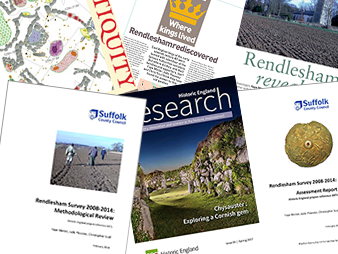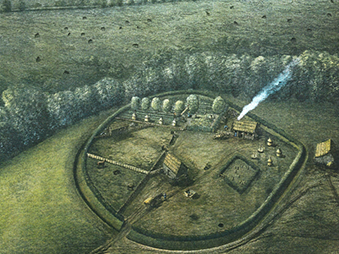Kingdom of East Anglia

Rendlesham can be identified as a royal estate centre, a place where, for some of the time, the kings would have lived, administered justice and collected dues. There are other sites in the region that would also have served as temporary royal residences as the court travelled around the kingdom, but at present Rendlesham is the largest and the longest-lived of these places.
This part of Suffolk formed the core of the 7th century Kingdom of the East Angles, which not only includes the royal settlement at Rendlesham but also two major cemeteries at Snape and Sutton Hoo, the productive sites of Coddenham and Barham, as well as the port and town of Ipswich.
During the 7th century, a small settlement of foreign traders was established at Ipswich, in the area near St Peters Church and the modern Novotel hotel. In the 8th century this settlement expanded into a town and port that was the trade and manufacturing centre of the kingdom for the next 200 years, probably taking over some of the functions of the Rendlesham estate.
Contacts with Continental Europe
Gold coins, known as Merovingian tremisses, are more numerous from Rendlesham than found at any 5th to 8th century site. A purseful of 37 tremisses which was excavated from Mound One at Sutton Hoo has been interpreted as indicating royal gift exchange between East Anglia and the Merovingian rulers in France. The tremisses at Rendlesham and elsewhere were reused as pendants. However the presence of blank coins, weights and cut coins at Rendlesham may show that they were being used as currency in high level transactions. Bronze coins minted by the Byzantine emperors in the late 6th and early 7th century are even more unusual finds in early England. The eight Byzantine coins from Rendlesham suggest that foreign merchants came here.
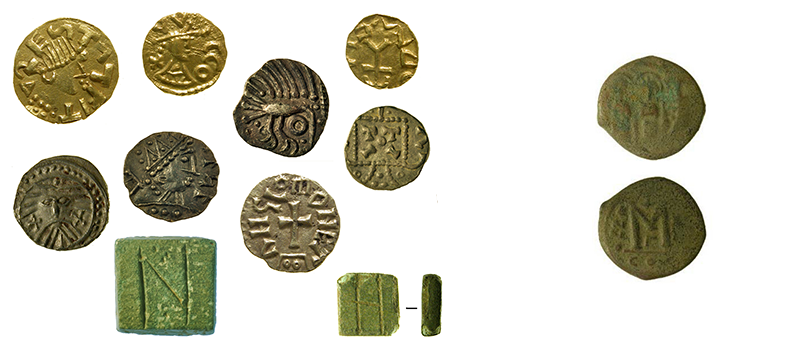
Image: Coins and weights (left) and Byzantine Follis of Justin II minted Constantinople 575-576 (right) found at Rendlesham
The metal detecting survey at Rendlesham has also uncovered the presence of other objects of European origin. Fragments of a footring indicate a type of European bronze coptic bowl, and distinctive continental brooches indicate contact with Europe in marriage dowries or through trade.
Rendlesham, as an elite centre, has major implications for our understanding of the character and origins of the early kingdoms and process of state-formation around the North Sea. Its role as a central place in society, economy, politics and ideology, and networks can begin to be understood thanks to recent research undertaken by Institute of Archaeology at University College London. Lordship and Landscape in East Anglia, a project funded by the Leverhulme Trust, aims to establish a new understanding of territorial lordship and regional kingship in early post-Roman Eastern England.
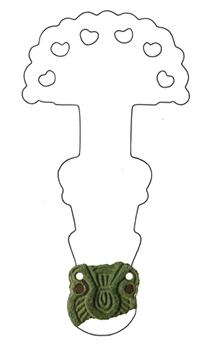
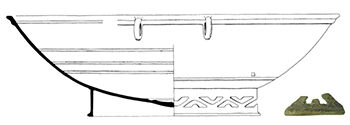
Image: Continental brooch (left) and footring fragment with drawing of coptic bowl (right) found at Rendlesham

